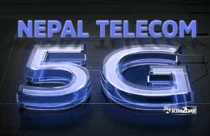ITU urges Nepal to bring third telecom operator


The International Telecommunication Union (ITU) has suggested facilitating the entry of a third player in the country’s mobile service business in order to expand wireless broadband services. Nepal Telecom and Ncell are the only operators with a national network.
The ITU, a UN body, has stated in its master plan entitled “Wireless Broadband Master Plan until 2020 for the Federal Democratic Republic of Nepal” that consideration should be given to helping the competitive entry of a new entrant with the view of encouraging competition and promoting wireless broadband services.
The master plan, which was recently submitted to the Nepal Telecommunications Authority (NTA) for its feedback, was prepared to provide recommendations for development of effective broadband technology as part of the ITU WBB Master Plan project for four countries in the Asia Pacific—Nepal, Myanmar, Samoa and Vietnam.
The master plan has provided a timeline for up to the year 2020 for the deployment of affordable access to broadband data service in the country, according to an NTA source. The master plan is focused on achieving the maximum gains in terms of coverage and on ensuring that the provision of fast and effective broadband service can be achieved in a short period of time.
The WBB master plan project was launched last year under the joint partnership of the ITU and the Korea Communications Commission with the aim of assisting Asia and Pacific countries to develop their own wireless broadband master plan for providing access to broadband supported services and applications at rates that are affordable and comparable to those in the developed countries.
The ITU had obtained assistance from the NTA and the Ministry of Information and Communications to draft the master plan. NTA chairman Bhesh Raj Kanel said that they were studying the draft to give feedback to the ITU. “As soon as we get the final master plan, we will send it to the Ministry of Information and Communications (MoIC) to get its approval for implementation to develop broadband,” he added.
The broadband development plan has also recommended to the government to adopt a unified licensing structure by migrating the existing operating licences of telecom operators. “A unified licensing regime would simplify the licensing procedure, allow service providers to use any technology and ensure flexibility and efficient use of resources,” states the draft master plan made available to the Post.
Meanwhile, the government has been mulling a unified licensing base which allows licensees to run any type of telecom service with a focus on small rural telecom operators. The MoIC has been studying a related recommendation of the NTA. The master plan has also advised the NTA to immediately review the spectrum in 900 MHz assigned to rural operators for better utilisation of scarce spectrum. “The draft says the 900 MHz band should be re-farmed on efficiency grounds so that spectrum is utilised on a national basis for making telecom more affordable and qualitative,” the source said.
The spectrum assigned to rural small providers comprise a total of 9.8 MHz of paired 900 MHz, and the spectrum assigned to small operators is almost 36 percent of the 900 MHz spectrum which is currently allocated for use in the country. The master plan has urged the government to create the condition for the entry of a new mobile operator within this year and auction a portion of the 700 MHz spectrum for deployment of long-term evolution (LTE) by next year, consider auctioning additional LTE spectrum by 2014, conduct a review of the necessary adoption targets for 2020 and achieve the broadband goal of 10 percent penetration by 2015.
Likewise, it has underlined the need to consider allocation of the 2300 MHz and 2.6 GHz bands by 2018 to meet the goal of wireless high speed data service within 2020.(Source:ekantipur)















